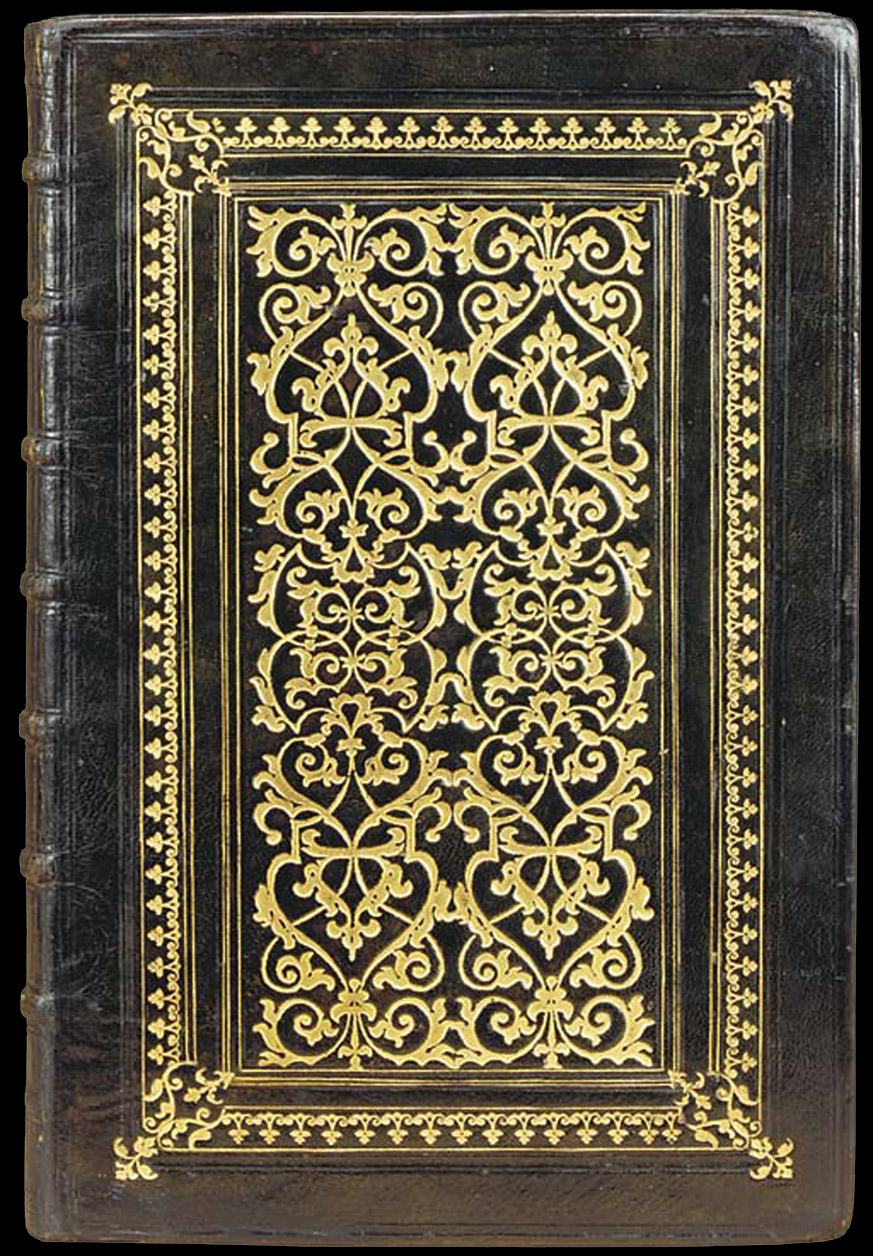

| The binding shown above is found in a 2004 Christie's auction catalogue The Michel Wittock Collection, Part I : Important Renaissance Bookbindings July 7, 2004 London, United Kingdom. It is Lot 112: TERENTIUS AFER, and the item description is very informative: |
|
Remarkable for its central panel composed of four impressions of a large, elaborate arabesque block, the Wittock Terence is attributable to a shop recently renamed the Salel Binder after a series of manuscripts dedicated by Hugues Salel to Franćois I which are bound by this shop. Schunke recognised that it was a shop independent from, if inspired by, the royal binder Etienne Roffet, and named it the 'Fontainebleau Binder' owing to its work for the royal library there. Most recently, Laffitte and Le Bars propose the appellation 'Salel Binder' as both more accurate and more specific. The Salel Binder, active from about 1540 to 1545, did indeed bind books for the royal library at Fontainebleau, but had numerous other clients in addition, most of whom remain as anonymous as the binder they patronised. One of the features of work by the Salel Binder is his use of a block or plaque. Two occur more commonly (De Marinis,Appunti e ricerche bibliographiche, 1940, pl. CCVIII) and at least 4 others are known. The elaborate block on the present binding has not been reproduced in the standard binding literature, but the other four tools on the sides occur frequently on Salel Binder books. See Laffitte and Le Bars, Reliures royales de la Renaissance, p. 53 and nos. 12, 13, 15; Nixon,PML, no. 7; Needham no. 46; Hobson, Humanists, pp. 182-183; Esmerian I, lot 66; Goldschmidt 197. |
| Only one thing threw me a bit, the reference to Esmerian 1, lot 66, which we have been looking at in depth in the last few pages. Finally I discovered that this reference should read Esmerian 1, lot 113, which is this very item. Turning quickly to Esmerians Catalogue we find that he says "probably executed in the workshop of Estienne Roffet". |
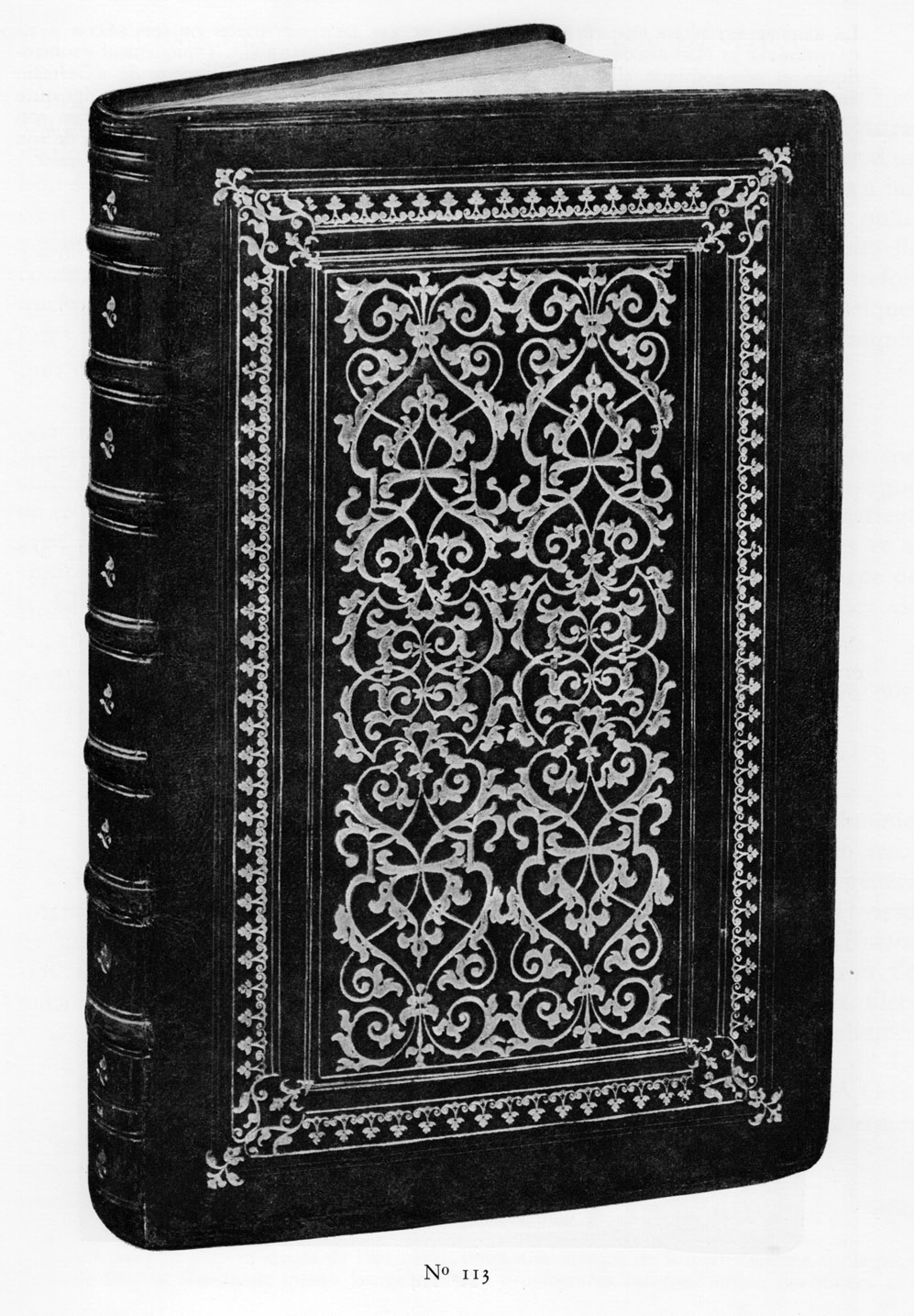
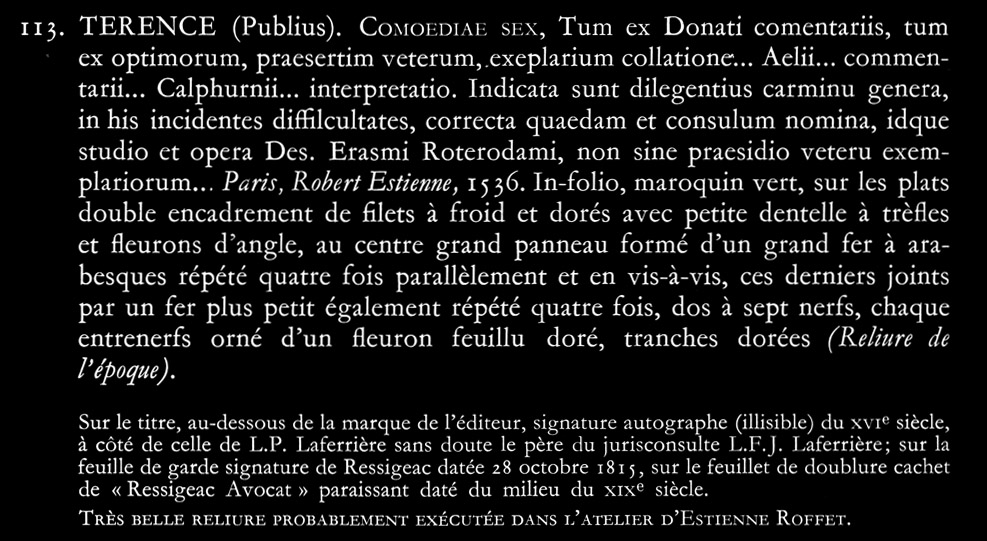
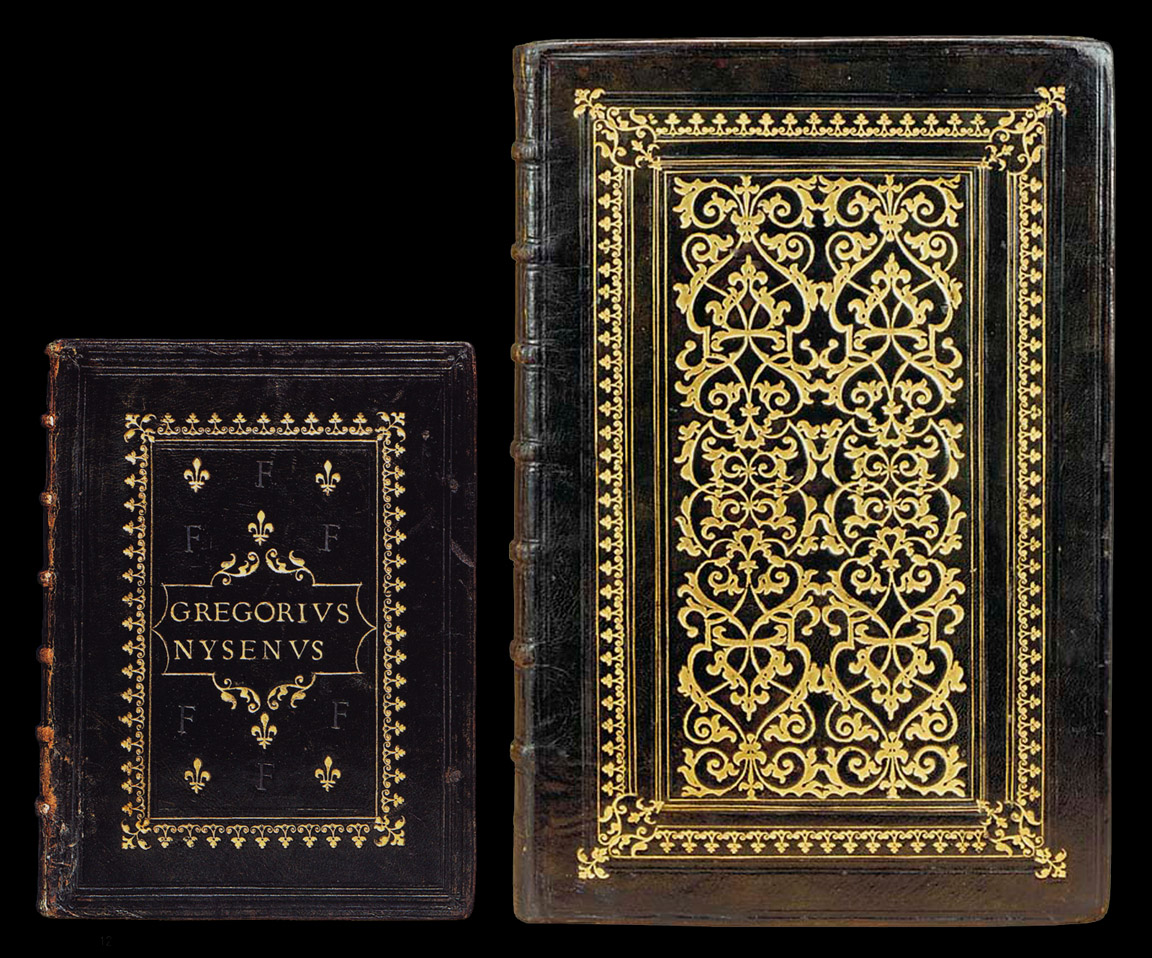
| In Comparative Diagram 2, I compare a binding from Reliures Royales (N° 12 pp. 56) which the authors have attributed to the Salel Binder, with the Christie's lot (N° 112). Here we can see the same border constructed with small tools as well as other identical tools |
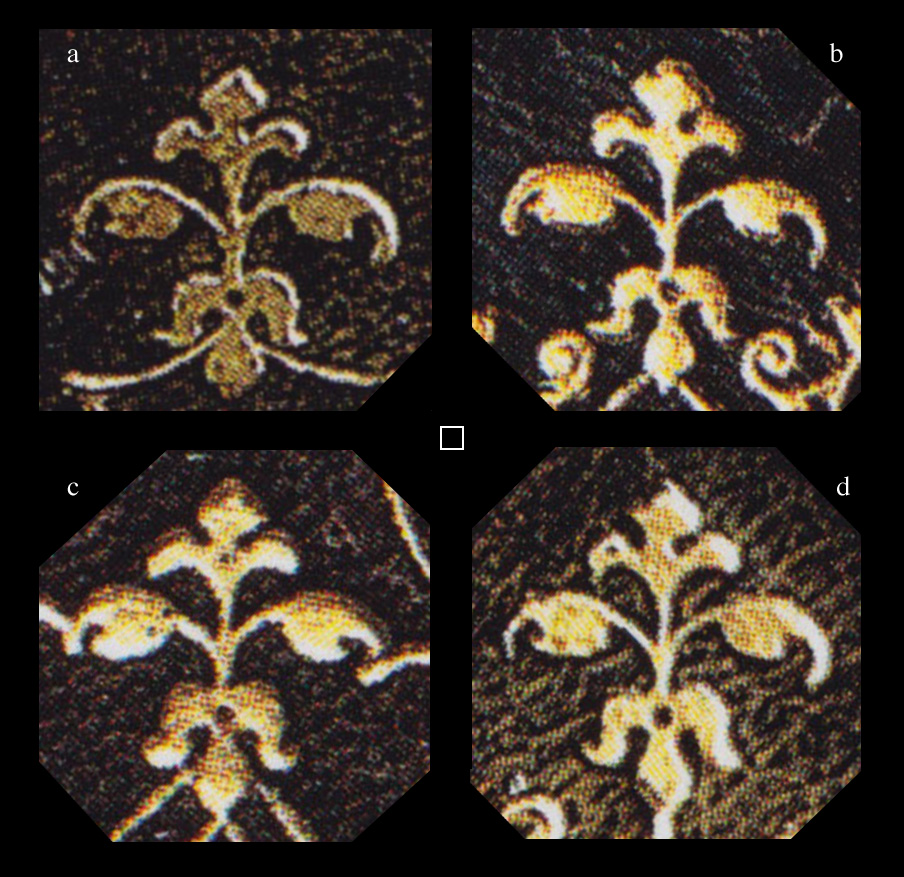
| There is probably no other tool imprint as representative of the Salel Binder as this small fleuron shown in Comparative Diagram 3. It is found on many if not most of his bindings. There is no similar imprint in Nixon's 1965 classification, therefore I take the liberty of calling this imprint Salel 1. There are many easily identified characteristics or anomalies in this tool, the left hand leaf or claw is more open and extends a bit lower than that of the right. Please note that I have not removed the surrounding fragments that are attached or overlay and or partially obscure certain examples. From these four imprints we can anyway get a good idea of the imprint model. However a really thorough investigator would probably take the time to create a truly accurate type model. This brings me to another point, which is that all that we are doing here will be much better done by a computer that will be able to instantly recognize the imprints and identify the binder, it may not be tomorrow but it won't be long before I am rendered obsolete. |
| information about the author | return to the home page of VIRTUAL BOOKBINDING |